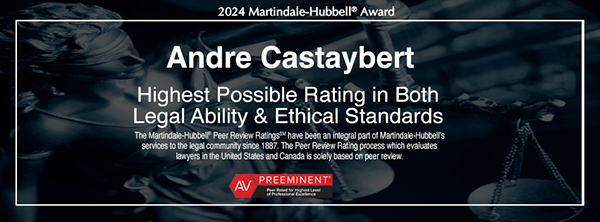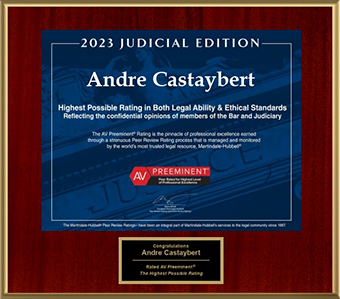What Is a Trademark?
A trademark is a word or other kind of symbol that is used by a person or company to distinguish its goods or services and indicate their source. For example, Ford Motor Company uses the trademark MUSTANG to distinguish a line of cars.
Under the United States Trademark Act (“Lanham Act”), a trademark may be “any word, name, symbol or device or any combination thereof adopted and used by a manufacturer or merchant to identify his goods and distinguish them from those manufactured or sold by others.” Although the Lanham Act’s definition of what is protectable as a trademark appears to be short and simple, the scope of its potential coverage extends as far as the creativity of marketing executives and is limited only by the decisions of judges and the U.S. Patent and Trademark Office.
The most common and and straightforward protection extends to words. For example, PALMOLIVE is a famous trademark. Because the statute talks about a “combination” of any of the elements, a series of words turned into a slogan (e.g., SOFTENS HANDS WHILE YOU DO DISHES) can also be protected as a trademark. Of course, the slogan must function as a trademark, which usually means that it must be on the goods themselves rather than just in advertising.
Even a single letter or a group of letters (or numbers) that do not make up a word can be protected as a trademark. For example, V8 has been protected on vegetable juice and “S” has been protected alone for Singer sewing machines. Phone numbers have been protected as trademarks—in one case, a retail mattress dealer with a 628-8736 phone number and the slogan “DIAL-A-MATTRESS and drop the last ‘S’ for savings” was able to obtain an injunction against the use of the slogan and telephone number 1-800-MATTRESS.
The key is that the words, letters, numbers or slogans should not be descriptive of the products or services but should serve as an identifier of the source of the products or services.
Symbols and designs are commonly used as trademarks. Some famous examples are the Nike “swoosh” and the Mercedes-Benz symbol. These symbols immediately convey the source of the goods to a consumer.
When the design and appearance of the product and packaging, with other elements that create the overall image, identify the source of the product, then this trade dress will be protected. To be considered trade dress, the combination of elements must be distinctive (either inherently or through acquired secondary meaning) and cannot be functional. Examples of protected trade dress include the design of the Dodge VIPER, the combination of features on a jug of maple syrup and a toy bank that resembled a small flush toilet. A functional design that had been protected by an expired patent cannot be protected as trade dress.
Similarly, distinctive elements that are used to identify the source of a service may be protected as trade dress: An example of service mark trade dress might be the distinctive decor of a restaurant chain.
For some time, it was unclear whether color alone could function as a trademark. In 1995, the Supreme Court settled the issue, holding that even a single color could be protected as a trademark as long as the color did not serve a utilitarian function. Usually, for a single color to serve as a trademark, a plaintiff will have to demonstrate secondary meaning, i.e., that the public associates the color with the source of the goods in question. An example is the pink color used on the Owens-Corning insulation.
There is little law on the protection of sounds, smells and other marks that are detected through nonvisual senses. However, the Trademark Rules of Procedures had allowed marks that are “not used in printed or written form” to be registered, and the U.S. Patent and Trademark Office has on occasion permitted the registration of these “nontraditional” trademarks. Certificates of registration have been issued for sounds such as the roar of the Metro-Goldwyn-Mayer lion and the sound of the NBC “chimes.” In 1990, the Trademark Trial and Appeal Board (TTAB) ruled that a fragrance could serve as a trademark and permitted the registration of a scent in connection with sewing thread and embroidery yarn. The TTAB emphasized the evidence required to obtain such a registration is substantial, and that scents could not be registered as trademark for products such as cologne and perfume, where the scent is considered to be functional.
Not all trademarks are created equal. In the vast array of trademarks that consumers encounter in the marketplace, some marks are stronger than others. While some marks start out strong, others gain strength through time and effort. A strong mark is a mark that is distinctive in connection with the goods or services with which it is used, and, as a result will be readily recognized by consumers as a source indicator.
Inherently distinctive marks serve as source indicators the minute they are created. There are three types of inherently distinctive marks: arbitrary marks, fanciful marks and suggestive marks.
- Arbitrary marks are common words or symbols which are in common use but have no meaning in connection with the goods or services with which they are used. Some examples are, PENGUIN for books, and APPLE for computers.
- Fanciful marks are coined words or symbols that are created to serve as a trademark. Generally these words or symbols are readily recognized as source indicators because they have no other meaning. Some examples are, PROZAC for pharmaceutical preparations and CLOROX for bleach.
- Suggestive marks are trademarks which suggest a characteristic of the goods or services, but do not directly describe the goods or services. Some examples are MIRACLE GRO for plant fertilizers and SNACKWELLS for cookies.
Nondistinctive marks generally cannot function as trademarks because they are either the generic names, and therefore not an indicator of the source of the goods or services, or they are so highly descriptive that consumers will never perceive them as indicating the source of the goods or services. For example, it is likely that the use of “WHITE” on white rice would never be perceived as a source indicator. Consumers would likely perceive this as a generic description that only describes the goods, not their source.
Some marks are not distinctive at their inception but grow to be distinctive over time. These words or symbols initially may not be recognized as trademarks for a variety of reasons. For example, the relevant wording may be descriptive of the goods on which it is used, or the name of the geographic origin of the goods. As a result, consumers would not immediately recognize the word or symbol as a source indicator.
Nevertheless, it is often possible for such designations to acquire distinctiveness and become source indicators through efforts such as extensive use of the mark in commerce, or widespread advertising and promotion. Thus, while the wording EVEREADY at one time may have been perceived as a laudatory description of the readiness of batteries, this wording is now readily recognized by consumers as a trademark.








